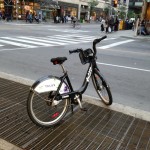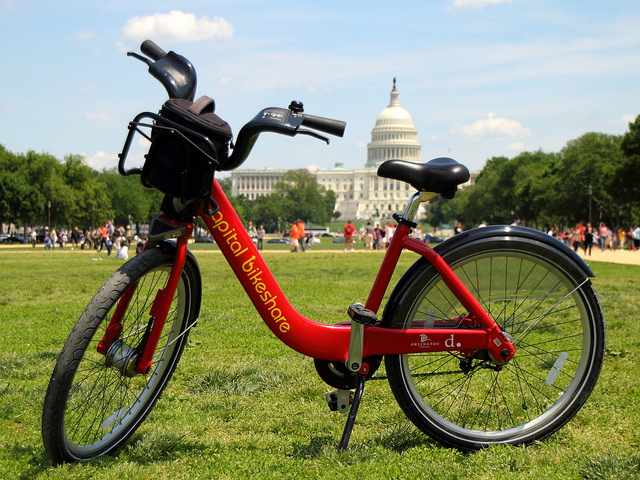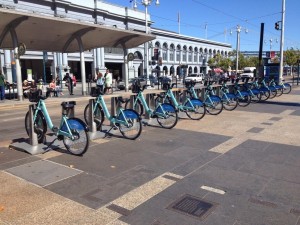-

-
The Bixi Logo
-

-
As bike sharing gets more popular, public health officials are concerned people are on bikes without helmets.
-

-
A row of Bixis stands waiting for lunchtime riders in Montreal.
-

-
These Bixi riders and cyclists at lunch in Montreal. Only one of them is wearing a helmet.
-

-
At rush hour, just one Bixi was available near the Atwater station of the Montreal Metro.
-

-
One lone Bixi bike in Toronto.
By Micheline Maynard
During my week in Montreal and Toronto, I had my eye out for evidence of bike sharing. I didn’t have to look far in Montreal, which is considered one of the world’s top bike friendly cities. Toronto was a much different story.
I’d booked my Montreal hotel near the Atwater Metro station in Westmount, the traditionally English part of the city, because I wanted to get around with ease. Upon checking in, my hotel clerk handed me a neighborhood map. “Here is the Metro station, you just walk two blocks down the hill,” she explained. “And here are the Bixis.”
In fact, it hadn’t even taken me that long to find them. As soon as my taxi pulled out of Montreal’s central station, I spotted a man on a Bixi waiting at the light.
Over the next few days, I spotted Bixis in all the neighborhoods I visited, at all times of the day, even late in the evening after I was coming back from dinner. People rode Bixis to lunch, and to work, and out for drinks. Late one afternoon, I passed the Atwater Bixi dock and found it held just one bike — all the others were in use.
Ahmed El-Geneidy, associate professor at the School of Urban Planning at McGill University, smiled when I told him that. Montreal, he explained, is the equivalent of a model home for Bixi, the bike sharing company that dominates the world market. It constantly brings visiting civic officials to the city to see bike sharing in action. So, naturally, Bixi docks and bikes are plentiful.
It was not the same in Toronto. Continue reading →













